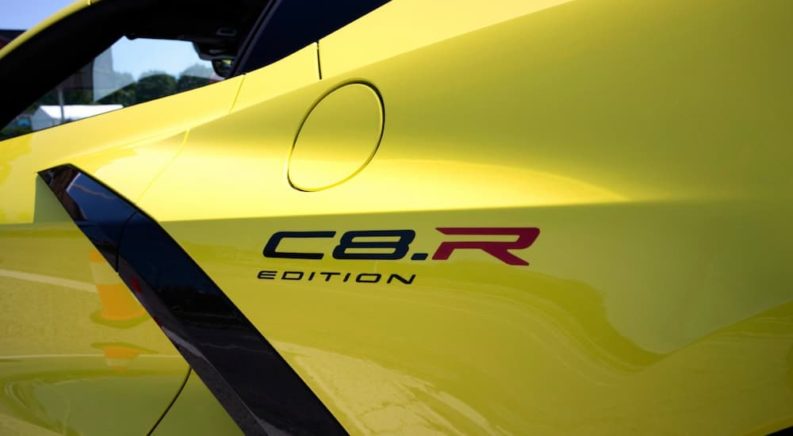2022 marks the 90th anniversary of the legendary 24 Hours of Le Mans. However, in addition to the historic significance, this year will mark an inflection point for the cars racing around the Circuite de la Sarthe. The decision to lower the cost of entry to Le Mans’ top prototype class is about to pay off, and this year should mark the last time that Toyota has competed almost unchallenged in the Hypercar class. On the other end of the scale, 2022 will be the final year for factory GT car racing at Le Mans, with recently announced rule changes pushing factory teams into the prototype class as GT endurance racing becomes a purely amateur event. With these exciting changes coming up, it is time to refresh ourselves on the cars currently competing.
Le Mans Hypercar (LMH)
The top class of cars has undergone several changes in recent years, with the current Le Mans Hypercar (LMH) class joining the field for the first time just last year. The LMH class replaced the Le Mans Prototype 1 (LMP1) class in 2020 after spiraling development costs resulted in several teams ending their participation in the 24 Hours of Le Mans. The LMH spec cars are slightly larger, heavier, and less powerful than the old LMP1 cars. This keeps costs down, but it does mean that they are around 10 seconds slower around the Circuit de la Sarthe. However, they are still the fastest cars racing at Le Mans.
An LMH car has a minimum weight of 2,270 pounds and a maximum power output of 670 hp. While there are additional restrictions on performance, including aerodynamics, suspension design, and more, the LMH rules are actually looser than the old LMP1 rules, allowing a greater variety of designs. One requirement that has remained constant is that LMH cars are still required to have room for two seats, although a second seat does not have to be installed––a unique tradition of Le Mans that dates back to the days when endurance racing required a ride-along mechanic to keep the car running.
There are currently four teams with LMH cars: two from Toyota and two from Glickenhaus. Toyota is the favorite to win, having picked up three consecutive victories at the 24 Hours of Le Mans. The Toyota car is the GR010 Hybrid which combines a 3.5L twin-turbo V6 with a lithium-ion battery pack and hybrid all-wheel drive. The Glickenhaus SCG 007 takes a different approach, using a 3.5L twin-turbo V8 developed by combining two World Rally Championship I-4 engines.
The fifth and final LMH entry in the 2022 race is not actually a Le Mans Hypercar––it’s a grandfathered LMP1 car from Alpine. The 4.5L V8 that powers it has been detuned, and the car carries extra ballast to meet the LMH requirements. Despite these restrictions, the Alpine A480 has performed well, finishing ahead of the two Glickenhaus cars in the 2021 race.
For 2022, Le Mans has also allowed Le Mans Daytona Hybrid (LMDh) cars to compete in the hypercar class for the first time. The LMDh class was designed for the IMSA SportsCar Championship, the American endurance racing counterpart to the European Le Mans Series, and has similar specs to the LMH class. While a half dozen manufacturers have announced their intention to build LMDh cars, none of them will be participating in this year’s 24 Hours of Le Mans.
Le Mans Prototype 2 (LMP2)
While the LMH cars are the fastest on the field, the majority of the prototypes racing at the 24 Hours of Le Mans fall into the Le Mans Prototype 2 (LMP2) class. While LMH and LMP2 cars look similar, they have very different performance and requirements. To begin with, all LMP2 teams are not factory-supported and use chassis built by a small number of approved manufacturers rather than being bespoke designs––for 2022, all but one of the 27 entries were built by Oreca (the final car was built by Ligier). Every car also uses the same Gibson 4.2L naturally-aspirated V8 engine producing no more than 436 hp.
LMP2 cars are lighter than LMH cars, with a minimum weight of 2,050 lbs, but the speed difference is substantial. While the Toyota LMH cars managed 3:27 lap times in 2021, the fastest LMP2 cars only reached 3:31 lap times. This put the top LMP2 cars eight laps behind the winning LMH car and one lap behind the slowest LMH car after 24 hours of racing. However, the much lower cost of entry makes this a far more popular and competitive class than the elite LMH.
Le Mans Grand Touring Endurance (LMGTE)
The final type of car racing in the 2022 24 Hours of Le Mans follows the Le Mans Grand Touring Endurance spec (LMGTE). Unlike the prototypes, these cars must be based on road-legal production vehicles and must be powered by an engine from a production car (although not necessarily from the road car that the LMGTE car is based on). However, there are some fairly major restrictions that prevent some of the wilder road cars from being used for this class.
First, LMGTE cars have a minimum weight of 2,745 pounds and must be rear-wheel drive. Second, naturally aspirated engines must be no larger than 5.5L, and turbocharged engines no larger than 4.0L. Finally, as with all cars competing in the 24 Hours of Le Mans, LMGTE cars must have room for at least two seats. While there are other restrictions, these major requirements set the stage for LMGTE cars to be based on medium-sized sports cars.
There are four different LMGTE cars in the 2022 race: the Aston Martin Vantage AMR (4 teams), the Chevy Corvette C8.R (2 teams), the Ferrari 488 GTE Evo (16 teams), and the Porsche 911 RSR-19 (11 teams). The Aston Martin and Ferrari cars are both powered by 4.0L turbocharged V8 engines, but the Porsche uses a 4.2L naturally aspirated flat-6, and the Corvette has a 5.5L V8. In the 2021 race, the fastest cars from Ferrari and Corvette both completed 345 laps and put down 3:47 lap times. Porsche was right behind, with a 911 completing 344 laps with a 3:48 lap time. However, the fastest Aston Martin only completed 340 laps with a 3:49 lap time.
For the 2022 race, the LMGTE cars are divided into two classes: professional and amateur. The LMGTE Pro class is designed for factory-supported teams with professional drivers, while the LMGTE Am class is intended for “gentleman racers.” However, the lines can get blurry––for instance, AF Corse, Ferrari’s racing team, has two cars running in the LMGTE Pro class and three cars in the LMGTE Am class. The main differences come down to how much racing experience the drivers are allowed to have and that LMGTE Am cars must be at least one year old.
For 2022, there will only be seven cars in the LMGTE Pro class: three Ferraris, two Corvettes, and two Porsches. However, there will be 26 cars in the LMGTE Am class. Because of the declining numbers of factory teams, 2022 will be the last year for the LMGTE Pro class. After the 2023 race, the LMGTE Am class will switch to using FIA GT3 cars since there will no longer be incentives for factories to produce cars specifically for the LMGTE class.
Looking Forward to Change
The 2022 running of the 24 Hours of Le Mans promises to be a fitting celebration of this legendary race’s 90th anniversary. With 62 cars taking the field in four classes to race through the day and night, we will again be treated to a level of excitement rarely seen in motorsports. However, as riveting as the 2022 race promises to be, next year is already shaping up to be more exciting as more teams enter the elite LMH class, and the GT class begins its switch to using GT3 cars. Le Mans has long been one of the pinnacles of motorsports, and while the recent rule changes may have resulted in cars that are a bit slower, they promise to bring more manufacturers in to enliven the race.




